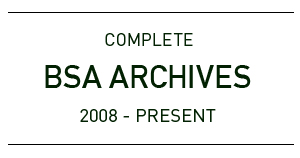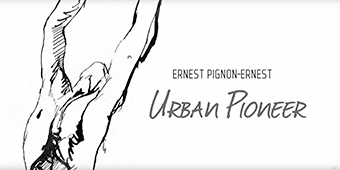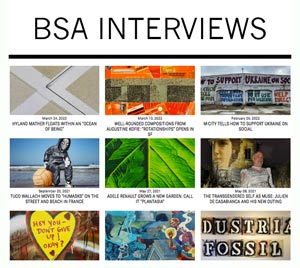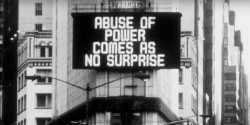In a striking decision that appears to favor the protection of graffiti and Street Artists works in the public space, the 5Pointz case came to a close this week with a ruling that punishes the owner/developer of the compound in Long Island City for acting “willfully” and out of spite toward the artists whose work had transformed his dilapidated property into a world-known holy place for exhibition of the art forms there.
Upholding the 2018 decision by Judge Frederic Block, the plaintiffs include 20 artists and the curator and founder of the 5 Pointz project, Meres One aka Jonathan Cohen.
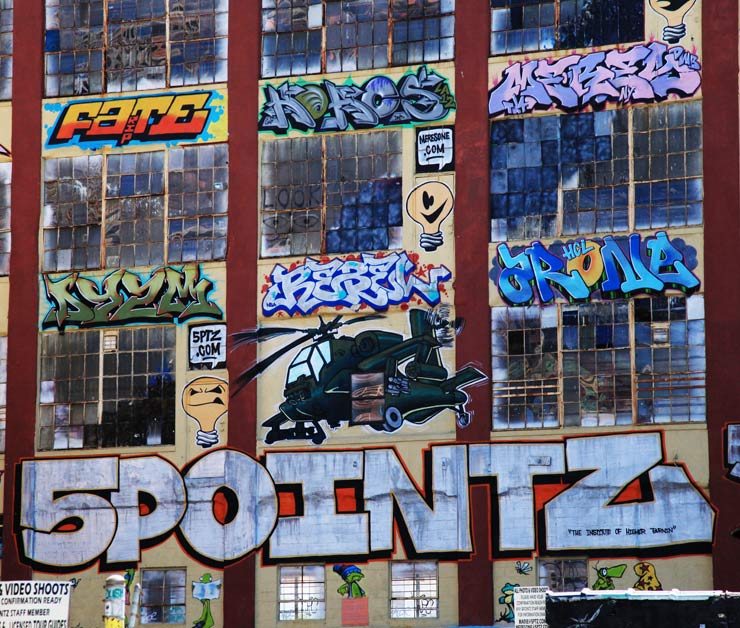
“The legacy of 5 Pointz we hope is that this elevated art form is now valued and recognized in a court of law as art no less no more,” says Meres One in a statement with Marie Cecile Clageul co-founder of 5 Pointz Creates and the creator of Museum of Street Art (MoSA) on the Bowery.
“The other legacy is how this art form is now respected and it has been humbling to see in recent years how real estate entities want to collaborate with artists and understand the need for preservation…
“On a personal level, this is a validation that as difficult as these past 7 years have been, standing up was the right thing to do and justice prevailed.”
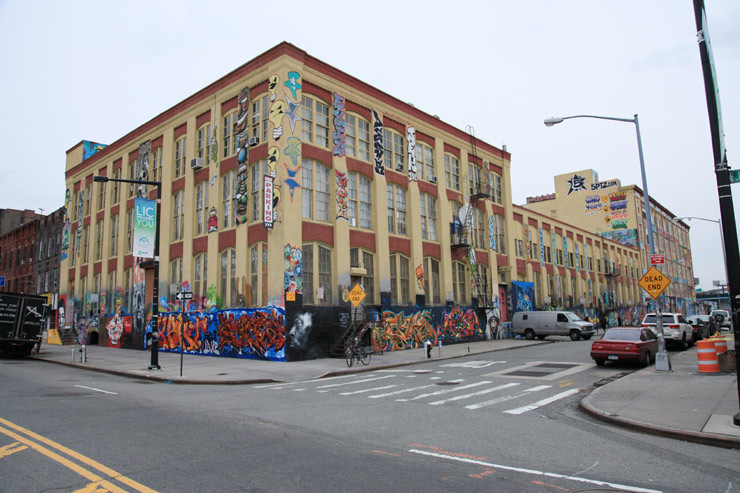
Many see the new ruling by a federal judge in the Second Circuit as a vindication of the Visual Artists Rights Act of 1990 (VARA), which grants specific rights to artists to control the use of their work, even if it is on someone else’s property. In the case of 5Pointz, it was not the act of destroying the art that eventually cost the wealthy developer a large fine of nearly seven million dollars, it was the manner in which it was done in defiance of the court proceedings and against the proscribed actions called for in the VARA.
Central to the events that were examined was the sloppy whitewashing of the compound under cover of night while legal proceedings to prevent the demolition of the property were underway – a poker game move that has ultimately cost the developer Wolkoff far more than the cheap paint his workers used for buffing.
Cautious observers say that the ruling is narrowly focused on the behaviors of this actor, rather than a carte blanche endorsement of illegal graffiti that protects it from being destroyed by property owners. “If he did not destroy 5Pointz until he received his permits and demolished it 10 months later, the Court would not have found that he had acted willfully,” said Judge Block in his original ruling.
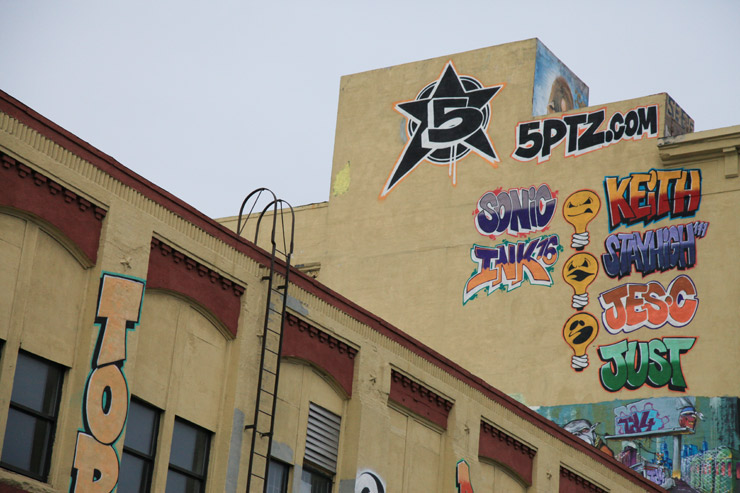
As ever with an art form that muddies the waters of law and opinion, Street Art and graffiti’s countervailing winds are blowing a new direction in the city as a resurgence of illegal whole-car graffiti again is being seen by NYC train riders. With increased rhetorical anger from the MTA and newly beefed-up anti-graffiti resources targeting the illegal stuff, those winds are souring a cultural détente that has existed in the everyday person’s assessment of the relative value and contributions these artists make to our cityscapes.
Additionally, the courts are being challenged to dismiss the rights of artists in court cases by corporations and brands which appear to be overreaching when appropriating art found in the public sphere to sell their wares.
Jesse Cory, co-owner and director with Roula David of Detroit based Inner State Gallery and the annual Murals on the Market festival, has worked with hundreds of artists in these related genres for two decades or so. With Mercedes’ muscular defense of its right to use whatever art they find on the street as fair game to sell a product, many in Detroit say they have seen the shift of interest by private business toward Street Art and murals go from curious to passionate to predatory.
“This ruling to uphold the settlement and compensation to 5 Pointz artists affirm that judges consider (VARA) Visual Artists Rights Act statue as law and that the artists do control the right to their mark even if it’s on a property that they do not own,” says Cory.
“While this case of Mercedes Benz preemptively suing artists to make a claim that the artist does not have any rights in the usage of their art in corporate advertising is much different from the 5 Pointz legal dispute the fact that judges are ruling in the artists favor is a positive sign.”
For the moment, many artists and fans are celebrating a ruling that will undoubtedly be cited in future cases – a ruling that gives added credibility and cultural currency to the valuable contributions that graffiti, Street Art and many other forms of Urban Art have made to our cities and our culture.
ArtNet:
New York Times:
Graffiti Artists Awarded $6.7 Million for Destroyed 5Pointz Murals
Other Articles You May Like from BSA:
Happy Holidays to all you stupendous and talented and charming BSA readers! We thank you from the bottom of our socks for your support this year. The best way we can think of to celebrate and comm...
As we draw closer to the new year we’ve asked a very special guest every day to take a moment to reflect on 2017 and to tell us about one photograph that best captures the year for them. It’s a...
A new elaborate and inventive public art / scavenger hunt installation in Berlin brings you back inside the combined imaginations of Various & Gould, where you must trust them as they lead you a...
This week BSA is checking out French Polynesia to get an appreciation for the Street Art, graffiti and street scene here while the 5th Annual ONO’U is taking place. Join in the tropical action while w...
Artist Rich Thorne aka Richt is lucky to be from a UNESCO world heritage site. A river port town of 25,000, his hometown of Barnstaple in North Devon, England has a “biosphere status”; a category res...
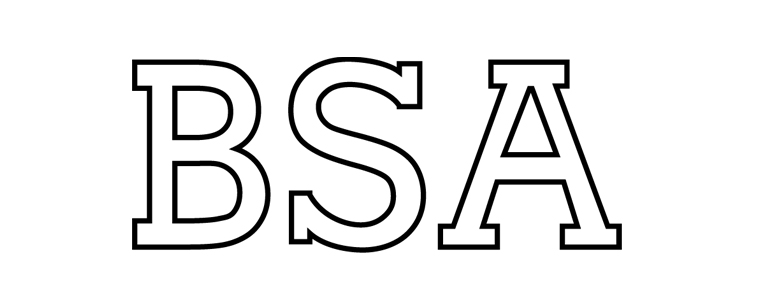 BROOKLYN STREET ART LOVES YOU MORE EVERY DAY
BROOKLYN STREET ART LOVES YOU MORE EVERY DAY
